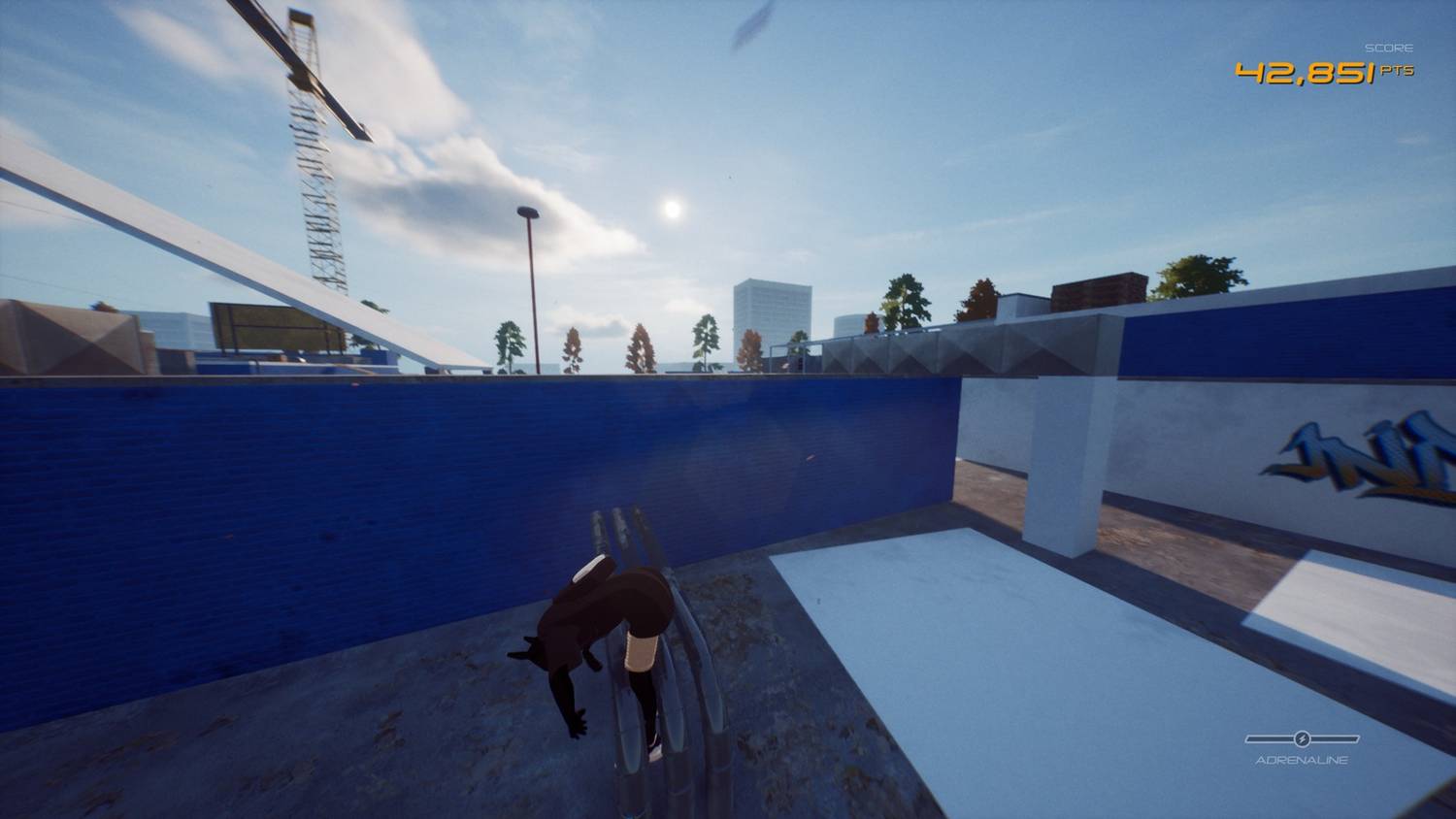A Parkour Paradox: Rooftops & Alleys Has the Moves, but Lacks the Direction to be a Genre-Defining Hit
Popular Now
 League of Legends
League of Legends
 Valorant
Valorant
 Genshin Impact
Genshin Impact
 Rust
Rust
 PUBG Mobile
PUBG Mobile
 Poppy Playtime
Poppy Playtime
 Candy Crush Saga
Candy Crush Saga
 Minecraft
Minecraft
 Free Fire
Free Fire
 Auto X Drift Racing 3
Auto X Drift Racing 3
 For decades, the promise of a true, dedicated parkour game has tantalized players. We’ve seen tantalizing glimpses in the smooth, elegant movement of Mirror’s Edge and the acrobatic chaos of Dying Light, but a game that focuses purely on the art of freerunning has remained elusive. Enter Rooftops & Alleys: The Parkour Game, which fully launched on June 17, 2025. Developed by a solo developer, this game is a love letter to the art of movement, with a fluid, physics-based system that is a joy to master. The moment you first string together a perfect wall run, a flip, and a smooth forward roll, you feel the potential of a genre-defining masterpiece. But after a few hours of playing, a darker truth begins to emerge. The game, with its gorgeous movement, is a bit like a talented runner with no sense of direction. It has the physical mechanics to be a massive hit, but it trips over its own feet with a lack of compelling content, a frustrating control scheme, and an overall feeling of being a brilliant tech demo rather than a full-fledged game. It’s a parkour paradox: a game that is a joy to play, but a chore to stick with.
For decades, the promise of a true, dedicated parkour game has tantalized players. We’ve seen tantalizing glimpses in the smooth, elegant movement of Mirror’s Edge and the acrobatic chaos of Dying Light, but a game that focuses purely on the art of freerunning has remained elusive. Enter Rooftops & Alleys: The Parkour Game, which fully launched on June 17, 2025. Developed by a solo developer, this game is a love letter to the art of movement, with a fluid, physics-based system that is a joy to master. The moment you first string together a perfect wall run, a flip, and a smooth forward roll, you feel the potential of a genre-defining masterpiece. But after a few hours of playing, a darker truth begins to emerge. The game, with its gorgeous movement, is a bit like a talented runner with no sense of direction. It has the physical mechanics to be a massive hit, but it trips over its own feet with a lack of compelling content, a frustrating control scheme, and an overall feeling of being a brilliant tech demo rather than a full-fledged game. It’s a parkour paradox: a game that is a joy to play, but a chore to stick with.
The game’s most significant achievement is its movement system. The physics are so good that the act of simply running, jumping, and vaulting feels satisfying in itself. The game gives you a massive amount of freedom to express yourself through movement, with a variety of moves that can be strung together into a seamless flow. It’s a game that, in its best moments, feels like a meditative, rhythmic dance. The developers have stated that their goal was to create a game that was “a playground for parkour enthusiasts,” and they have succeeded on that front. The game’s six levels, which range from a container ship to a massive skyscraper, are filled with opportunities for creative lines and a satisfying, vertical sense of exploration. The addition of a “pigeon mode,” which allows you to fly over the levels to scout out new routes, is a brilliant touch that adds a layer of depth to the exploration. But for all its brilliance in movement, the game struggles to give the player a compelling reason to use those moves.
 The Four Flaws That Trip Up a Potential Masterpiece
The Four Flaws That Trip Up a Potential Masterpiece
For a game that is so close to being a genre-defining classic, its flaws are all the more frustrating. They are not game-breaking, but they are a constant, nagging reminder of a missed opportunity. Here’s why Rooftops & Alleys, for all its potential, fails to stick the landing.
- A Lack of Focused Content: The game’s biggest issue is its lack of content. The solo experience is limited to time trials and trick-scoring challenges, and while these are fun, they are not enough to sustain a player for a long period of time. There is no narrative, no progression outside of cosmetic unlocks, and no compelling reason to keep playing once you have mastered the time trials. This leaves the game feeling like a brilliant sandbox with nothing to do in it. The lack of online leaderboards is also a huge missed opportunity for a game that is so reliant on high scores and fast times.
- A Confusing and Frustrating Control Scheme: While the movement is fluid, the controls themselves are a mess. The game has a complex control scheme that requires a series of button inputs for even the most basic moves. This is a deliberate choice by the developers to “add depth,” but it can lead to frustrating moments where your character simply fails to grab a ledge or runs up a wall instead of across it. This is a massive issue in a game that relies on precision and flow. The game’s tutorial does a poor job of explaining the nuances of the control scheme, leaving the player to learn through a frustrating process of trial and error.
- The Unforgiving Physics: The game’s physics, while brilliant for a fluid run, can also be a source of constant frustration. A single mistimed jump can lead to your character’s body comically flopping around the environment, which is funny the first time, but maddening when you are trying to perfect a time trial. The game’s “ragdoll” physics, while a key part of its humor, are a constant source of frustration that can break the flow of a run.
- The Aimless Multiplayer: The game’s multiplayer, which allows up to four players to free-roam together, is a fantastic idea in theory, but it is let down by a lack of structure. The game allows players to set up their own games of tag or trick battles, but it is an aimless, unstructured experience that is more of a curiosity than a compelling mode. The game would have benefited from a more structured, competitive multiplayer experience, with dedicated game modes and leaderboards that would have given players a reason to come back and compete with their friends.
 A Business and News Perspective: A Warning for Indie Developers
A Business and News Perspective: A Warning for Indie Developers
From a news and industry perspective, Rooftops & Alleys is a powerful case study in the importance of content. The game’s success on Steam and its positive user reviews are a testament to the power of a single, brilliant idea. The fact that a solo developer could create a game with such a fluid and satisfying movement system is a massive achievement. However, the game’s mixed reviews from critics and its lack of longevity are a clear warning. A brilliant, core gameplay loop is not enough to make a game a success. It must be supported by compelling content, a rewarding progression system, and a reason for players to keep coming back. Rooftops & Alleys is a brilliant tech demo, a tantalizing glimpse of a genre that is just waiting to be explored. But until it can add some much-needed content and polish, it will remain a game that has all the moves, but no idea where to go.









